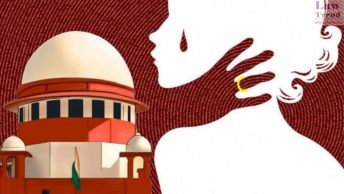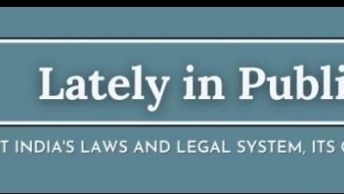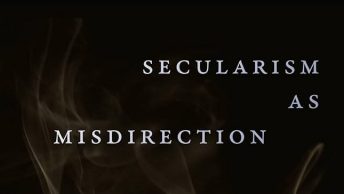Continuing from the previous post, as I was curious to know what Yogendra Yadav found from his voters’ opinion surveys regarding the communal violence in Gujarat, I visited his CSDS website, and went to the results of the opinion surveys for 2004 elections for Gujarat.
These are the results of surveys for Gujarat:
Q.62: One hears a lot about riots. Tell me which of them is closest to your opinion?
Ans: 74.1 percent of the respondents said it was totally wrong. 4.5 per cent said it was bound to happen and was necessary; 8.7 per cent said it was a bit too much; 12.7 per cent did not have an answer.
Q.64: Opinion about Godhra riots:
a. Whatever happened after Godhra should be forgotten by all Hindus and Muslims. Do you agree?
Ans: 84.8 per cent of the respondents agreed, while 7.1 per cent disagreed. 8.1 per cent didn’t have an answer.
b. It is necessary that those responsible for the riots should be punished. Do you agree?
Ans: 83.3 per cent agreed; 6.8 per cent disagreed while 9.9 per cent did not have an answer.
c. Whatever happened after Godhra was necessary to teach anti-national elements a lesson. Do you agree?
Ans: 67.1 per cent agreed, 14.7 per cent disagreed, and 18.2 per cent had no answer.
Well, it may be diffcult to reach any firm conclusions about the attitude of the electorate from these responses, as the questions seem to have been very specifically structured. But indications? Yes, the electorate did not support the carnage at all, contrary to what was widely believed. If at all Narendra Modi got a mandate in 2002 and 2004, it could not have been due to the post-Godhra carnage, but could be attributed to other factors. Clearly, there appears to be a wide chasm between what the political class, which is mostly behind such massacres, thinks of deriving political and electoral mileage from such a carnage, and the reality of how the electorate views it. The answer to the last question may be disquieting, but the question is clearly suggesting a lesson to the anti-national elements, not minorities.






Could you post more information or a link about the methodology that was used to conduct these surveys. I could not find it on the website. Many such surveys, especially exit polls, etc. have been wrong, precisely because of their faulty methodology.
Regards,
H
Dear VV,
Answer to 64(a) is not specific enough to draw any conclusion though I wonder whether people have any remorse for the events – one does not hear anyone say, ‘Too bad the holocaust happened but now that it is all over, let us just forget about it and move on’. Again, question 62 is framed in such a way that it comes across more as one about the moral acceptability of riots: if people preferred peace to violence in 64(a), it is not altogether surprising that they believe that riots are wrong in general – it does not distinguish between riots as a practice in isolation and the riots in particular as a response to the Godhra incident (surveys can be framed, as in this case, in a way that elicits morally contradictory positions that respondents do not have to confront). 64(c) is more specific than 62 because it posits the question of retributive violence in the context of Godhra.
Meaning of the answer to 64(b) is also not clear enough as one does not know whom the people hold responsible for the riots. Do they really understand it to mean those who organized and perpetrated it in retaliation or those responsible for Godhra itself? A positive answer to the latter would also resolve the apparent contradiction between answers to 64(b) and 64(c) (I am unclear here why you think that anti-national elements and minorities are mutually exclusive; it is quite possible that a significant segment of the minorities are held to be anti-national). Taken together, that would indicate that while violence is not acceptable as a rule, the carnage that followed is indeed justified as a response to the incident at Godhra – a sentiment that concurs with the Sangh Parivar’s line. It is possible that other positive indicators also contributed to Modi’s reelection but with such strong sentiment expressed in response to 64(b) and 64(c) (compare the percentages in answer to question 64 with those in answer to questions 56-59), the violent events are more likely than not to have influenced, perhaps heavily (if not determined), voters’ choices at the hustings. The question we are interested in is how likely is it that this issue influenced the electoral outcome? With violent retribution seen as a justifiable reaction and a relatively popular chief minister (for or despite that fact), I speculate that the answer is: positively in favor of the CM and his party. The Parivar’s calculation is therefore probably not off the mark.
To H: I am unable to shed more light on the methodology immediately. May be later,if I get any material or link.
To Dilip: Q.64(c, I believe, is deliberately worded as not to let the respondent believe that the questioner treats minorities and anti-nationals synonymously. Pl. also note that the words ‘whatever happened after Godhra’, if read with ‘anti-nationals’, need not , on the face of it, imply carnage, but could indicate the arrests in Godhra itself, for the train tragedy, and the action against the accused. Retributive violence need not be read into the question.
The questions, having been asked in the backdrop of Godhra, cannot be construed as academic, and every answer must be understood in the context of Godhra and after.
Q64(b) is clear. It does not refer to the Godhra incident, which is not a riot. It is only the post-Godhra incidents which were called a riot, though the correct word is perhaps carnage or a pogrom.
I am amazed that we draw different conclusions from the same data! It only underscores the need for more focussed survey to understand the phenomenon of voter attitudes.
VV seems to point that the questions were intelligently constructed and were nuanced in some way. However, I seriously doubt if these nuances were understood by people or were informed by the surveyor (which brings in the question of methodology). I would like to think I am wrong and people understand these nuanced issues.